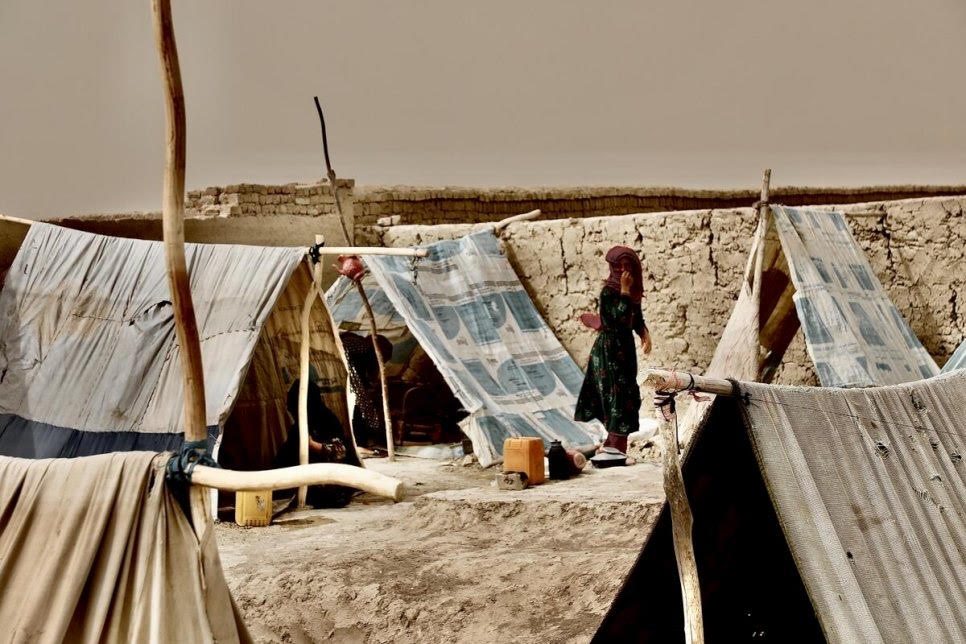Helicopters touching down on the roof of the embassy in Saigon and evacuating American personnel—along with very few allied South Vietnamese—was the scene precipitating the American pullout of forces from Vietnam. It seems those optics are destined to repeat themselves in America’s latest foray, as Afghan National forces are quickly and steadily overpowered by the Taliban on the heels of an American pullout from its longest war.
For one to label the Taliban’s recent advance across Afghanistan as swift would understate the complex web of logistics and troop movements at play. Between the two, the Taliban is under-equipped and outmanned compared to the Afghan National Defense Forces. The Afghan National forces also boast an Air Force, with the Taliban’s most advanced aerial capability being unmanned drones. These facts only beg the larger question of what exactly is happening in the South Asian nation, why the armed forces are collapsing, what is the government’s plan to respond, if one exists, and, frankly, how long will the Afghan government and Kabul remain in place?
The decision to withdraw American and allied troops was announced by President Biden in April, with plans for nearly all foreign forces to be out of the country by September; four months later than the plan originally negotiated by former President Trump. The Taliban, for their part in accordance with said deal, pledged not to attack foreign forces as they prepared for withdrawal, though Afghan National Forces were not part of that moratorium on violence. Directly following the announcement by President Biden of the departure of foreign troops, the Taliban began their current offensive.
The armed group began their assault, tearing through the traditionally insecure rural swathes of Afghanistan, slowly encircling provincial capitals and seizing border crossings in the progress. Early signs of the coming collapse of the Afghan Army came in the falling of the Islam Qala border crossing with Iran, as well as the Spin Boldak crossing with Pakistan. The Islam Qala district and border crossing fell to the Taliban on July 9th, with customs and government officials fleeing into neighboring Iran. This came mere days before the Taliban’s seizure of another key border post, Spin Boldak, on the border with Pakistan, on the 14th of July. It’s estimated that tens of millions of dollars ($) worth of trade come through the two ports each month.
The seizures came amid numerous reports of Afghan military personnel and police fleeing ahead of Taliban advance by the thousand. The Taliban, in the earlier weeks of the offensive, seemed intent on strangling the central government by quickly taking border crossings, undermining the government’s ability to finance their troops while filling Taliban coffers. The prospect of losing rural districts to advancing Taliban forces was expected following the exit of foreign forces, although the bitter string of defeats, cross-border retreats, and loss of border crossings had to serve a debilitating blow to the morale of Afghan National Forces as well as handicapping the economic capabilities, strategic maneuvering, and supply routes of the Kabul Government.
The losses of the Kabul government were quickly written off by Western allies, as a predictable consequence of the retreat of foreign forces. The Taliban’s troop movements and attack strategy have been extremely calculated, first taking swathes of rural territory to facilitate supply lines, moving then to take strategic border crossings, and most recently the encircling and assault of provincial capitals. The strategy follows a line of encirclement, then of strangling the central government into submission. Highlighting the steady loss of territory to the Taliban is the tally of districts under its control: on April 13th, the day of the announcement of the withdrawal of foreign troops, 194 districts were contested, 129 under Government Control, and only 77 under control of the Taliban. Today, as is depicted below, the Taliban control 247 districts, 97 are contested, with the government in control of only 63, including Kabul at the time of this writing.
The outset of August proved to be the busiest time for the armed group as the they had for the most part completed its strategy of encircling provincial capitals, often taking surrounding districts with little to no resistance from Afghan troops. At this point the only recourse for the government had been to attempt to mobilize anti-Taliban public volunteer “uprising forces” in effect boosting the manpower and resistance the ANSF can project. Even this though hasn’t proved to slow down the group as the Taliban have amassed more territory than the group has held to date, bolstered by the gains of their blistering August offensive.

Focusing solely on the actions in August, we see a group that seems to far outmatch the government forces, albeit outnumbered, it is a reach to now say the Taliban aren’t armed similarly to the ANSF considering the amount of territory, cities, and bases the Taliban have taken. With the previously mentioned tactic of encirclement in mind, the Taliban invoked their next phase, seemingly of choking off the government from controlling provincial capitals, while continuing to isolate Kabul. In doing so, the Taliban took their first provincial capital on August the 6th, seizing Zaranj, the capital of Nimroz province. This seizure served as the writing on the wall for defending Afghan government forces as by the end of the week on the 8th, the Taliban had captured and were administering four provincial capitals, including Sheberghan and Kunduz, major cities in the oft-restive Northern region. During the Taliban’s time in power during the late 90s and early 2000s the provinces in the Northern region came together in the anti-Taliban “Northern Alliance”, almost the entirety of the former bastion of Taliban resistance has been seized by the group, with Sheberghan and Kunduz being the key cities to fall in the region.

The momentous advance of the Taliban has yet to be stopped by government forces, from seizing their first capital August 6th until the writing of this article, the early hours of August 14th, the former has seized 20 provincial capitals, a majority of the 34 provinces. On Saturday morning the 14th the Taliban began a multi-pronged assault to take the last government held city in the North, Mazar-i-Sharif, as embattled President Ghani pledged to keep fighting.
The armed group continues to put pressure on Kabul as well, albeit indirectly, as the group has taken the second and third-largest cities of Herat in the West and Khandahar in the South. In a more direct move, the Taliban on the morning of August 14th seized Logar province and had begun to enter the Char Asyab district located just 7 miles south of Kabul. The attacks by the group on heavy populated areas such as Herat, Khandahar, as well Lashkar Ga of the strategic Helmand province are especially dangerous to civilians, as extremely confined urbanized warfare leads to higher civilian casualties. According to a United Nations report, civilians’ casualties have returned to a 2017-2018 peak of over 5,000, with newly renewed violence being the culprit, of the 5,000+ casualties, 39% were attributed to the Taliban, with 25% being attributed to pro-government forces, often via airstrike targeting anti-government forces.
The prospect of urban fighting, including airstrikes inside the city of Kabul, had been an absurd scenario only months ago, although now considering recent gains seems a more and more likely scenario. As more and more land, provincial capitals, and infrastructure fall to the Taliban, the prospect of Kabul as a reprieve from direct conflict is no longer the reality on the ground. In direct response to these territorial losses and in fear of what may happen over the span of the next few days, the Americans as well as some other European countries are sending thousands of troops to Kabul to assist not its defense, but their retreat from the embattled capital. The New York Times reports that an additional 3,000 Marines will be sent to Kabul, with another 4,000 stationed in Kuwait on stand-by. While only American personnel will be evacuated, the United States has been attempting to arrange third-party nations to host translators and other Afghans who assisted the coalition; it is unclear what, if anything, is keeping Biden from simply accepting those who assisted US forces on a humanitarian and asylum basis into the United States immediately.

At the time of writing over 400,000 people have been displaced in Afghanistan since the beginning of the year, joining the almost 3 million Afghan people already internally displaced due to fighting. The UN estimates that 250,000 have become displaced since the beginning of the Taliban offensive in May, with some 80% of that number being women and children fleeing fighting. Clean water, food, and shelter are hard to come by amid the deteriorating security situation, and very few places, if any are free from fighting.
This all comes amid the American withdrawal from the War. What was the reason for our being there? What did we gain? Who did we help? As Americans we might ask ourselves these questions, as we should always question our government’s actions. The answer is a painful nothing and no one. To be privileged enough to ask what we gained is indicative of the differences of power and suffering in the United States’ longest running conflict. The Afghan people suffered mightily for 20+ years of War between foreign forces allied with the government and insurgents, only for foreign forces to create a security vacuum following their hasty retreat. Questions must be asked of the feasibility of the Americans’ occupation in the first place, did the short-sightedness of conquering a lesser military in the Taliban cloud the complications of forming a working government that served all Afghan people. Why was the security situation as insecure as it was prior to announcing a withdrawal, why was the situation stagnant for years? Most of our questions will forever remain as they are, questions, one thing is certain though, Kabul will eventually come under direct pressure and will in all likelihood fall in the coming days and weeks rather than weeks and months. Continued suffering of the Afghan population writ large is certain.
One must wonder what the South Vietnamese thought as they saw the last American helicopters abandon them to the advancing armies of the North, one must wonder why 46 years later the American imperial military machine has made the exact same mistakes. Most of all one must wonder why Americans have allowed this practice of military intervention, further destabilization, and retreat to ravage many a country and civilian population. Another thing is certain, this destructive practice cannot continue, in perpetuity military adventurism has historically caused the fall of empires, continuing down this path, the United States could be the next.
Updated August 14th 1:23PM EST: Capital of Balkh Province, Mazar-i-Sharif, has fallen to the Taliban. Mazar-i-Sharif was the last major city remaining under Government control in the Northern region.
Updated August 15th 1:21PM EST. President Ashraf Ghani flees to neighboring Tajikistan as Taliban fighters enter Kabul.
Updated August 15th 3:58AM EST: Taliban fighters seize Jalalabad last Government controlled city outside of Kabul, completely encircling the capital.
